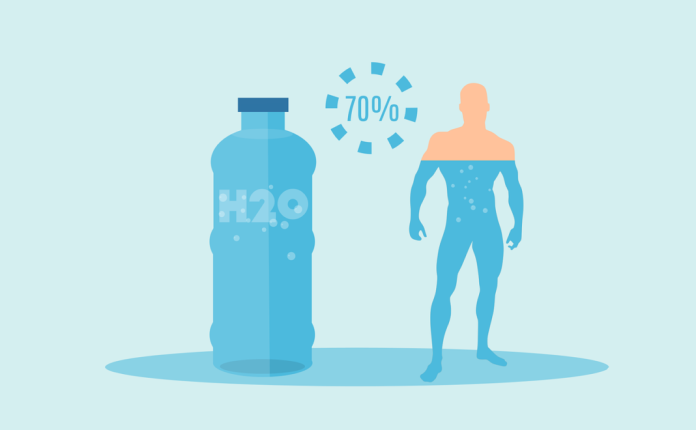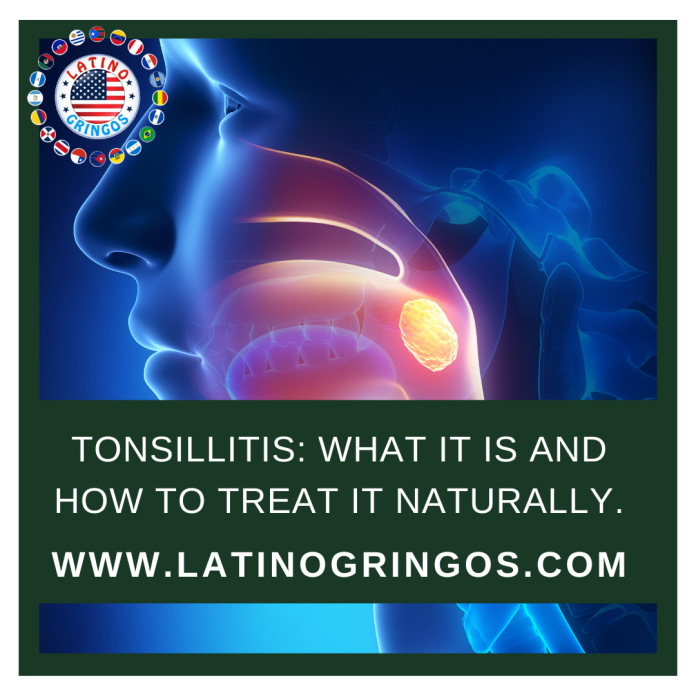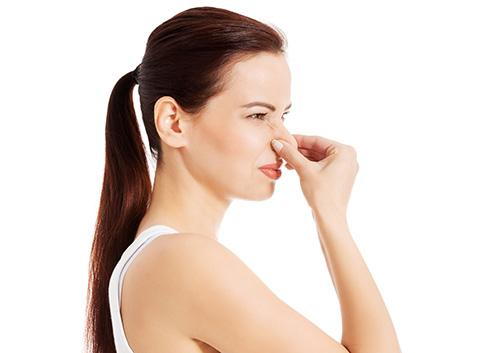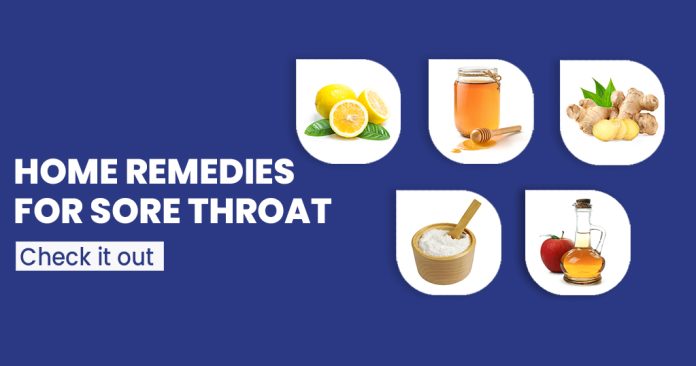Why Adding a Pinch of Salt to Your Water Enhances Exercise Performance
Staying hydrated during exercise is a no-brainer, but have you ever considered adding a pinch of salt to your water? While plain water helps replenish lost fluids, incorporating a small amount of salt can make a big difference in your exercise performance. In this article, we’ll explore the science behind this practice and explain why adding a pinch of salt to your water can be a game-changer for your workout routine.
The Science of Hydration: When you exercise, your body loses not only water but also essential electrolytes like sodium, potassium, and magnesium through sweat. Electrolytes play a crucial role in maintaining fluid balance, muscle function, and nerve communication. Inadequate electrolyte levels can lead to dehydration, muscle cramps, and decreased performance.
The Role of Sodium: Sodium, a key electrolyte, plays a significant role in maintaining proper fluid balance both inside and outside your cells. When you sweat, you lose sodium, which can disrupt this balance. Adding a pinch of salt to your water helps restore sodium levels, allowing your body to retain fluids more effectively and preventing dehydration.
Enhanced Hydration: Drinking water with a pinch of salt improves the absorption of fluids in your body. This is due to a process called osmosis, where water moves from areas of lower salt concentration (inside your cells) to areas of higher salt concentration (outside your cells). By maintaining the right balance of salt, you can increase the fluid absorption rate, ensuring your body stays properly hydrated during intense physical activity.
Reduced Risk of Cramps: Muscle cramps are often linked to electrolyte imbalances, particularly a deficiency in sodium. By including a small amount of salt in your water, you can help prevent cramps and keep your muscles functioning optimally, even during prolonged or intense workouts.
Improved Endurance: Dehydration can lead to a decline in exercise performance, leaving you feeling fatigued and unable to push yourself to your limits. Proper hydration, coupled with balanced electrolyte levels from the added salt, can enhance your endurance, allowing you to sustain your efforts for longer durations.
How to Do It: Adding a pinch of salt to your water is simple. Use high-quality sea salt or Himalayan pink salt for their mineral content. Just a small pinch (about 1/8 to 1/4 teaspoon) to a 16-ounce water bottle is sufficient. Be mindful not to overdo it, as excessive salt intake can have adverse health effects.
Staying hydrated is essential for maximizing your exercise performance and overall well-being. By understanding the role of electrolytes, particularly sodium, you can enhance your hydration strategy. Adding a pinch of salt to your water before and during your workout helps replenish lost electrolytes, improves fluid absorption, and reduces the risk of muscle cramps. So, the next time you head out for a workout, don’t forget to bring along your salt-enhanced hydration to unlock your body’s full potential and achieve those fitness goals.
Por Qué Agregar una Pizca de Sal a tu Agua Incrementa tu Desempeño al Ejercitarte
Mantenerse hidratado durante el ejercicio es una obviedad, pero ¿ha pensado alguna vez en añadir una pizca de sal al agua? Aunque el agua sola ayuda a reponer los líquidos perdidos, la incorporación de una pequeña cantidad de sal puede suponer una gran diferencia en tu rendimiento durante el ejercicio. En este artículo, exploraremos la ciencia que hay detrás de esta práctica y explicaremos por qué añadir una pizca de sal al agua puede cambiar tu rutina de entrenamiento.
La ciencia de la hidratación: Cuando haces ejercicio, tu cuerpo no sólo pierde agua, sino también electrolitos esenciales como el sodio, el potasio y el magnesio a través del sudor. Los electrolitos desempeñan un papel crucial en el mantenimiento del equilibrio de líquidos, la función muscular y la comunicación nerviosa. Unos niveles inadecuados de electrolitos pueden provocar deshidratación, calambres musculares y disminución del rendimiento.
El papel del sodio: El sodio, un electrolito clave, desempeña un papel importante en el mantenimiento del equilibrio adecuado de líquidos tanto dentro como fuera de las células. Cuando sudas, pierdes sodio, lo que puede alterar este equilibrio. Añadir una pizca de sal al agua ayuda a restablecer los niveles de sodio, permitiendo que el cuerpo retenga líquidos de forma más eficaz y previniendo la deshidratación.
Mayor hidratación: Beber agua con una pizca de sal mejora la absorción de líquidos en el organismo. Esto se debe a un proceso llamado ósmosis, en el que el agua se desplaza de las zonas con menor concentración de sal (dentro de las células) a las zonas con mayor concentración de sal (fuera de las células). Al mantener el equilibrio adecuado de sal, puede aumentar la tasa de absorción de líquidos, asegurando que su cuerpo se mantenga correctamente hidratado durante la actividad física intensa.
Reducción del riesgo de calambres: Los calambres musculares suelen estar relacionados con desequilibrios electrolíticos, en particular con una deficiencia de sodio. Al incluir una pequeña cantidad de sal en el agua, puede ayudar a prevenir los calambres y mantener los músculos funcionando de forma óptima, incluso durante entrenamientos prolongados o intensos.
Mejora de la resistencia: La deshidratación puede provocar una disminución del rendimiento durante el ejercicio, dejándole fatigado e incapaz de esforzarse al máximo. Una hidratación adecuada, junto con unos niveles equilibrados de electrolitos gracias a la sal añadida, puede mejorar su resistencia, permitiéndole mantener sus esfuerzos durante periodos más largos.
Cómo hacerlo: Añadir una pizca de sal al agua es sencillo. Utilice sal marina de alta calidad o sal rosa del Himalaya por su contenido en minerales. Una pequeña pizca (de 1/8 a 1/4 de cucharadita) en una botella de agua de 16 onzas es suficiente. Tenga cuidado de no excederse, ya que el consumo excesivo de sal puede tener efectos adversos para la salud.
Mantenerse hidratado es esencial para maximizar el rendimiento del ejercicio y el bienestar general. Si conoce el papel de los electrolitos, sobre todo del sodio, podrá mejorar su estrategia de hidratación. Añadir una pizca de sal al agua antes y durante el ejercicio ayuda a reponer los electrolitos perdidos, mejora la absorción de líquidos y reduce el riesgo de calambres musculares. Así que, la próxima vez que salgas a entrenar, no olvides llevar contigo una hidratación mejorada con sal para liberar todo el potencial de tu cuerpo y alcanzar tus objetivos de fitness.
Surprising Reasons You Shouldn’t Wear Makeup
In a world where makeup is often considered an essential part of daily grooming, it might seem unconventional to consider not wearing it. However, there are compelling reasons to embrace your natural beauty and give your skin a breather from cosmetics. From enhancing self-confidence to promoting skin health, here are seven valid and surprising reasons you might want to reconsider wearing makeup.
1. Promotes Skin Health: Makeup products, even those labeled as “non-comedogenic” or “hypoallergenic,” can potentially clog pores and lead to skin issues. Going makeup-free allows your skin to breathe and can help prevent breakouts, blemishes, and other skin irritations.
2. Allows Skin to Age Gracefully: Wearing heavy makeup regularly can accelerate the aging process by dehydrating the skin and emphasizing fine lines. Embracing your natural appearance can contribute to healthier-looking skin as you age.
3. Boosts Self-Confidence: Taking a break from makeup can help you appreciate your natural features and boost self-confidence. This shift in focus can lead to increased self-acceptance and a more positive self-image.
4. Saves Time and Money: The daily ritual of applying makeup can be time-consuming and costly. Opting for a makeup-free routine simplifies your mornings and saves you money spent on cosmetics.
5. Reduces Environmental Impact: Many makeup products contain chemicals and microplastics that can harm the environment. By skipping makeup, you’re contributing to reducing the demand for these products and their associated packaging.
6. Allows Authenticity to Shine: Wearing makeup can sometimes feel like putting on a mask. Going makeup-free encourages authenticity and allows your true self to shine through, fostering more genuine interactions with others.
7. Challenges Societal Norms: Society often dictates that women should wear makeup to be considered “put-together” or “professional.” By opting out of this norm, you’re challenging beauty standards and promoting diversity in definitions of beauty.
While makeup can be a fun and creative way to express yourself, it’s important to recognize that your natural beauty is just as valid and deserving of admiration. Going makeup-free can have a positive impact on your skin, self-esteem, and the environment, while also challenging conventional beauty norms. Embrace the idea of letting your natural radiance shine and enjoy the freedom that comes with embracing your true self. Whether you choose to wear makeup or not, the decision should always be rooted in what makes you feel comfortable and confident in your own skin.
Razones Sorprendentes por las que NO Deberías Usar Maquillaje
En un mundo en el que el maquillaje suele considerarse una parte esencial del aseo diario, puede parecer poco convencional plantearse no llevarlo. Sin embargo, hay razones de peso para abrazar tu belleza natural y dar a tu piel un respiro de los cosméticos. Desde la mejora de la confianza en uno mismo hasta la promoción de la salud de la piel, aquí tienes siete razones válidas y sorprendentes por las que podrías reconsiderar el uso de maquillaje.
- Promueve la salud de la piel: Los productos de maquillaje, incluso los etiquetados como “no comedogénicos” o “hipoalergénicos”, pueden obstruir los poros y provocar problemas cutáneos. Desmaquillarse permite que la piel respire y puede ayudar a prevenir brotes, manchas y otras irritaciones cutáneas.
- Permite que la piel envejezca mejor: Llevar mucho maquillaje con regularidad puede acelerar el proceso de envejecimiento al deshidratar la piel y acentuar las líneas de expresión. Adoptar tu apariencia natural puede contribuir a una piel de aspecto más saludable a medida que envejeces.
- Aumenta la confianza en ti misma: Tomarse un descanso del maquillaje puede ayudarle a apreciar sus rasgos naturales y aumentar la confianza en sí misma. Este cambio de enfoque puede conducir a una mayor autoaceptación y una imagen más positiva de ti misma.
- Ahorra tiempo y dinero: El ritual diario de maquillarse puede llevar mucho tiempo y ser costoso. Optar por una rutina sin maquillaje simplifica tus mañanas y te ahorra dinero gastado en cosméticos.
- Reduce el impacto medioambiental: Muchos productos de maquillaje contienen sustancias químicas y microplásticos que pueden dañar el medio ambiente. Al prescindir del maquillaje, contribuyes a reducir la demanda de estos productos y sus envases asociados.
- Permite que brille la autenticidad: A veces, llevar maquillaje puede parecer como ponerse una máscara. Ir sin maquillaje fomenta la autenticidad y permite que tu verdadero yo brille, fomentando interacciones más genuinas con los demás.
- Desafía las normas sociales: La sociedad suele dictar que las mujeres deben ir maquilladas para que se las considere “arregladas” o “profesionales”. Si te sales de esta norma, estarás desafiando los cánones de belleza y fomentando la diversidad en las definiciones de belleza.
Aunque el maquillaje puede ser una forma divertida y creativa de expresarse, es importante reconocer que la belleza natural es igual de válida y merece admiración. No maquillarse puede tener un impacto positivo en la piel, la autoestima y el medio ambiente, al tiempo que desafía las normas de belleza convencionales. Adopta la idea de dejar que brille tu resplandor natural y disfruta de la libertad que supone abrazar tu verdadero yo. Tanto si decides maquillarte como si no, la decisión debe basarse siempre en lo que te hace sentir cómoda y segura en tu propia piel.
Alcoholism: Strategies and Natural Approaches for Recovery
Alcoholism is a complex and pervasive issue that affects millions of individuals worldwide. Its detrimental impact on physical health, mental well-being, and relationships makes finding effective solutions crucial. While professional intervention is often necessary, there are also natural treatments and strategies that can complement traditional approaches to help individuals on their journey to recovery. In this article, we’ll explore how to address alcoholism and discuss some natural treatments that can contribute to the healing process.
Understanding Alcoholism: Alcoholism, also known as alcohol use disorder (AUD), is characterized by an inability to control alcohol consumption despite its negative consequences. It’s essential to recognize the signs of alcoholism, which may include increased tolerance, withdrawal symptoms when not drinking, unsuccessful attempts to cut down or control alcohol intake, and neglect of other activities due to alcohol consumption.
Professional Intervention: Seeking professional help is often the first step in addressing alcoholism. Mental health professionals, addiction counselors, and medical doctors can provide personalized treatment plans that may include therapies, support groups, and medication when appropriate. It’s important to understand that overcoming alcoholism is a journey that requires patience, commitment, and a comprehensive approach.
Natural Approaches: While natural treatments should not replace professional intervention, they can complement traditional methods and support overall well-being during recovery. Here are some natural approaches to consider:
- Nutrition: A balanced and nutritious diet plays a significant role in alcoholism recovery. Focus on consuming whole foods rich in vitamins, minerals, and antioxidants. Nutrients like B vitamins, magnesium, and zinc are particularly important for supporting the nervous system and reducing cravings.
- Physical Activity: Regular exercise not only promotes physical health but also enhances mental well-being. Engaging in physical activities you enjoy can reduce stress and anxiety, which are often triggers for alcohol use.
- Mindfulness and Meditation: Practicing mindfulness and meditation can help individuals become more aware of their thoughts, emotions, and triggers. These techniques provide tools to manage stress and cravings more effectively.
- Herbal Supplements: Some herbal supplements have been studied for their potential benefits in alcoholism recovery. Milk thistle, for instance, is believed to support liver health, while kudzu root may reduce alcohol cravings. However, it’s important to consult a healthcare professional before using any herbal supplements.
- Yoga and Relaxation Techniques: Yoga and relaxation exercises can alleviate tension and promote emotional balance. These practices enhance self-awareness and encourage a healthier lifestyle.
- Supportive Social Networks: Surrounding oneself with positive and supportive individuals can greatly aid in the recovery process. Joining support groups or participating in community activities can help build connections and combat feelings of isolation.
- Sleep Hygiene: Adequate sleep is vital for recovery. Establishing a consistent sleep schedule and creating a comfortable sleep environment can improve mood, energy levels, and overall cognitive function.
Addressing alcoholism requires a multifaceted approach that combines professional intervention, natural treatments, and a strong support system. While natural approaches can play a valuable role in supporting recovery, it’s crucial to prioritize professional guidance and medical advice. The journey to overcoming alcoholism is challenging, but with determination, patience, and the right strategies, individuals can reclaim their health, happiness, and control over their lives.
Alcoholismo: Estrategias y enfoques naturales para la recuperación
El alcoholismo es un problema complejo y generalizado que afecta a millones de personas en todo el mundo. Su impacto perjudicial en la salud física, el bienestar mental y las relaciones hace que sea crucial encontrar soluciones eficaces. Aunque a menudo es necesaria la intervención profesional, también existen tratamientos y estrategias naturales que pueden complementar los enfoques tradicionales para ayudar a las personas en su camino hacia la recuperación. En este artículo, exploraremos cómo abordar el alcoholismo y hablaremos de algunos tratamientos naturales que pueden contribuir al proceso de curación.
Entender el alcoholismo
El alcoholismo, también conocido como trastorno por consumo de alcohol (TCA), se caracteriza por la incapacidad de controlar el consumo de alcohol a pesar de sus consecuencias negativas. Es esencial reconocer los signos del alcoholismo, que pueden incluir un aumento de la tolerancia, síntomas de abstinencia cuando no se bebe, intentos infructuosos de reducir o controlar la ingesta de alcohol y descuido de otras actividades debido al consumo de alcohol.
Intervención profesional
Buscar ayuda profesional suele ser el primer paso para abordar el alcoholismo. Los profesionales de la salud mental, los consejeros en adicciones y los médicos pueden proporcionar planes de tratamiento personalizados que pueden incluir terapias, grupos de apoyo y medicación cuando sea apropiado. Es importante comprender que superar el alcoholismo es un viaje que requiere paciencia, compromiso y un enfoque integral.
Enfoques Naturales
Aunque los tratamientos naturales no deben sustituir a la intervención profesional, pueden complementar los métodos tradicionales y favorecer el bienestar general durante la recuperación. He aquí algunos enfoques naturales a tener en cuenta:
Nutrición: Una dieta equilibrada y nutritiva desempeña un papel importante en la recuperación del alcoholismo. Concéntrese en consumir alimentos integrales ricos en vitaminas, minerales y antioxidantes. Los nutrientes como las vitaminas del grupo B, el magnesio y el zinc son especialmente importantes para reforzar el sistema nervioso y reducir los antojos.
Actividad física: El ejercicio regular no sólo favorece la salud física, sino que también mejora el bienestar mental. Participar en actividades físicas que te gusten puede reducir el estrés y la ansiedad, que suelen ser desencadenantes del consumo de alcohol.
Atención plena y meditación: Practicar la atención plena y la meditación puede ayudar a las personas a ser más conscientes de sus pensamientos, emociones y desencadenantes. Estas técnicas proporcionan herramientas para gestionar el estrés y los antojos de forma más eficaz.
Suplementos herbales: Se han estudiado algunos suplementos herbales por sus posibles beneficios en la recuperación del alcoholismo. Por ejemplo, se cree que el cardo mariano favorece la salud del hígado, mientras que la raíz de kudzu puede reducir la ansiedad por el alcohol. Sin embargo, es importante consultar a un profesional sanitario antes de utilizar cualquier suplemento a base de hierbas.
Yoga y técnicas de relajación: El yoga y los ejercicios de relajación pueden aliviar la tensión y favorecer el equilibrio emocional. Estas prácticas mejoran el autoconocimiento y fomentan un estilo de vida más saludable.
Redes sociales de apoyo: Rodearse de personas positivas y solidarias puede ayudar mucho en el proceso de recuperación. Unirse a grupos de apoyo o participar en actividades comunitarias puede ayudar a crear vínculos y combatir la sensación de aislamiento.
Higiene del sueño: Un sueño adecuado es vital para la recuperación. Establecer un horario de sueño constante y crear un entorno de sueño confortable puede mejorar el estado de ánimo, los niveles de energía y la función cognitiva general.
Abordar el alcoholismo requiere un enfoque polifacético que combine la intervención profesional, los tratamientos naturales y un sólido sistema de apoyo. Aunque los enfoques naturales pueden desempeñar un valioso papel en la recuperación, es fundamental dar prioridad a la orientación profesional y al asesoramiento médico. El camino para superar el alcoholismo es difícil, pero con determinación, paciencia y las estrategias adecuadas, las personas pueden recuperar la salud, la felicidad y el control de sus vidas.
Sinusitis: Say Goodbye to Blocked Nose
Tired of the never-ending battle against sinus problems, with their headaches, stuffy noses, and general discomfort? It’s time to learn how to tackle sinus issues and feel better again. This easy guide will help you understand sinus problems, find out what’s causing them, and discover natural ways to get relief and breathe freely once more.
Getting to Know Sinus Troubles: Sinus problems can make breathing feel like a challenge and affect many people. Think of them as unwanted guests that hang around in your nose. But don’t worry – this guide can help you learn how to make your nose feel better.
Understanding the Basics: When your sinuses get inflamed, it can lead to problems like congestion and pressure in your head. It’s like a traffic jam in your nose that makes it hard to breathe.
Easy Tips to Feel Better:
- Steamy Showers: Taking warm showers can help clear your nose. Breathing in the steam can make you feel less stuffy and more comfortable.
- Drink Water: Drinking water is like giving your nose a drink. It can make the stuff in your nose thinner and help it come out easier.
- Saltwater Rinse: Rinsing your nose with salt water can help wash away things that make your nose feel bad. It’s like cleaning your nose to make it feel better.
- Sleep with Your Head Up: Sleeping with your head a bit higher than usual can help stuff in your nose not stay there. This can make you breathe better and feel less uncomfortable.
Nature’s Helpers: Natural Ways to Feel Better:
- Honey and Turmeric: Mixing a little bit of honey with a tiny bit of turmeric can be like a magic potion for your nose. It can help your nose feel better and keep away bad things.
- Fruits with Vitamin C: Oranges and lemons are not just yummy; they’re also good for your nose. They can help make your nose stronger and less stuffy.
- Ginger: Ginger is like a superhero for your nose. It can make your nose feel less swollen and more comfortable. You can use it in tea or food.
- Herbal Teas: Teas made from chamomile, eucalyptus, and peppermint can be like a cozy hug for your nose. Breathing in their smell can help open your nose, and they’re soothing too.
By following these easy steps and trying natural things, you can make your nose feel happy again. Your journey to feeling better starts now – take a deep breath and enjoy the comfort.
Sinusitis: Digale Adios a la Nariz Tapada
¿Cansado de la interminable batalla contra los problemas de sinusitis, con sus dolores de cabeza, congestión nasal y malestar general? Es hora de aprender a abordar los problemas de sinusitis y volver a sentirse mejor. Esta sencilla guía le ayudará a comprender los problemas de sinusitis, a averiguar sus causas y a descubrir formas naturales de aliviarlos y volver a respirar libremente.
Conozca los problemas sinusales:
Los problemas de sinusitis pueden hacer que respirar se convierta en un reto y afectar a muchas personas. Piense en ellos como invitados no deseados que merodean por su nariz. Pero no te preocupes: esta guía puede ayudarte a aprender cómo hacer que tu nariz se sienta mejor.
Entender lo básico
La inflamación de los senos paranasales puede provocar problemas como congestión y presión en la cabeza. Es como un atasco en la nariz que dificulta la respiración.
Consejos fáciles para sentirse mejor
Duchas de vapor: Ducharse con agua caliente puede ayudarte a despejar la nariz. Respirar el vapor puede hacer que te sientas menos congestionado y más cómodo.
Beber agua: Beber agua es como darle un trago a la nariz. Puede diluir las secreciones nasales y facilitar su expulsión.
Enjuágate la nariz con agua salada: Enjuagarte la nariz con agua salada puede ayudarte a eliminar las cosas que te hacen sentir mal. Es como limpiar la nariz para que se sienta mejor.
Dormir con la cabeza levantada: Dormir con la cabeza un poco más levantada de lo habitual puede ayudar a que las cosas de la nariz no se queden ahí. Esto puede hacer que respires mejor y te sientas menos incómodo.
Ayudantes de la naturaleza: Maneras naturales de sentirse mejor
Miel y cúrcuma: Mezclar un poco de miel con un poquito de cúrcuma puede ser como una poción mágica para tu nariz. Puede ayudar a que tu nariz se sienta mejor y alejar las cosas malas.
Frutas con vitamina C: Las naranjas y los limones no sólo son deliciosos, también son buenos para la nariz. Pueden ayudar a que tu nariz esté más fuerte y menos taponada.
Jengibre: El jengibre es como un superhéroe para la nariz. Puede hacer que tu nariz se sienta menos hinchada y más cómoda. Puedes utilizarlo en infusiones o alimentos.
Infusiones: Las infusiones de manzanilla, eucalipto y menta pueden ser como un abrazo acogedor para tu nariz. Respirar su olor puede ayudarte a abrir la nariz, y además son calmantes.
Siguiendo estos sencillos pasos y probando cosas naturales, puedes hacer que tu nariz vuelva a sentirse feliz. Tu viaje para sentirte mejor empieza ahora: respira hondo y disfruta de la comodidad
Tonsillitis: what it is and how to treat it naturally.
As its name indicates, tonsillitis affects the tonsils, which are a tissue of lymphatic mass found in the back of the throat, on each side of the pharynx, whose function is to act as a defensive filter against bacteria. and germs that could enter the respiratory tract, in addition to being able to produce antibodies to fight infections in the respiratory tract.
Tonsil infection is very common in infants, especially at the age of 5 or 6 years since it is when children come into contact for the first time with a large group of germs and bacteria through the oral tract, infecting the tonsils. tonsils Over time, these tissues develop anti-infection antibodies that in the future will help fight infections again and reduce all original symptoms.
Causes:
In this way, the main cause of tonsillitis is infection by viruses and bacteria, while apart from common viruses, the main bacterium that can affect the tonsils is Streptococcus pyogenes (group A streptococcus), the bacterium that causes strep throat. The tonsils are the main line of defense against any germ that enters through the oral tract, which is why they are the main ones to be affected.
Symptoms:
- sore throat
- inflammation of the tonsils
- nasal congestion
- appearance of white areas on the tonsils
- difficulty swallowing due to inflammation
- fever and chills
- cough
- headache
Natural Treatments:
- Gargle with water and salt: you should gargle with warm water and a little salt. This will help reduce inflammation, fight infection as well as relieve burning and sore throat. To do this, use a tablespoon of salt in a glass of water, stir well and gargle without swallowing the water. It is also possible to add lemon since due to its antioxidant and antiviral properties it can help improve symptoms.
- Turmeric infusion: it will help alleviate all the general symptoms caused by tonsillitis, it is ideal to take it before bedtime, for this you must prepare a cup of water and bring it to a boil, where you will add half a tablespoon of turmeric along with a quarter tablespoon of ground black pepper, make a cup and let sit for 15 minutes before drinking.
- tea with honey: honey also has properties that will help relieve symptoms, accompanying it with green tea or chamomile tea can help reduce inflammation of the throat and tonsils. Ginger tea is also highly recommended as it will help you combat all ailments effectively. You can also add a little lemon to this tea to improve the flavor and enhance the effects.
- Apple Cider Vinegar: With all its healing properties, apple cider vinegar works as an antimicrobial. To take it, you must add a tablespoon of vinegar to a cup of warm water along with one of honey, and take it at least twice a day.
To see more articles on these topics or others, keep visiting Latino Gringos ™. Make sure to follow us on our Instagram or Facebook to find out when we upload new articles or videos.
If you know someone who can benefit from our articles, even if they are not Latino, please share with them. We love our Latino community, but we also like to help anyone in need.
Amigdalitis: que es y como tratarla naturalmente.
como su nombre lo indica, la amigdalitis afecta las amigdalas, las cuales son un tejido de masa linfatico que se encuentran en la parte posterior de la garganta, a cada lado de la faringe, cuya funcion es la de actuar como un filtro defensivo contra bacterias y germenes que podrian ingresar a las vias respiratorias, ademas de poder producir anti cuerpos para combatir infecciones en el tracto respiratorio.
la infeccion de las amigdalas es muy comun en los infantes, sobre todo a la edad de 5 o 6 años ya que es cuando los niños entran en contacto por primera vez con un gran grupo de germenes y bacterias a traves del tracto bucal, infectando las amigdalas. con el tiempo estos tejidos desarrolan anti cuerpos contra las infecciones que en un futuro ayudara a combatir nuevamente las infecciones y reducir todos los sintomas originales.
Causas:
de esta forma la principal causa de la amigdalitis es la infeccion por parte virus y bacterias, siendo ais que aparte de los virus comunes, la principal bacteria que puede afectar las amigdalas es la Streptococcus pyogenes (estreptococo del grupo A), la bacteria que causa amigdalitis estreptocócica. las amigdalas son la principal linea de defensa de cualquier germen que ingrese por el tracto bucal, razon por la cual son las principales en ser afectadas.
Sintomas:
- dolor de garganta
- inflamacion de las amigdalas
- congestion nasal
- aparicion de zonas blancas en las amigdalas
- dificultad para tragar debido a la inflamacion
- fiebre y escalofrios
- tos
- dolor de cabeza
Tratamientos Naturales:
- gargaras de agua y sal: debe hacer gargaras con agua tivia y un poco de sal esto le ayudara a reducir la inflamacion, combatir la infeccion ademas de aliviar el ardor y dolor de gargante. para ello utilice una cucharada de sal en un vaso de agua, remueve abien y haga gargaras sin tragar el agua. tambien es posible añadir limon ya que debido a sus propiedades antioxidantes y antivirales puede ayudar a mejorar los sintomas.
- infusion de curcuma: le ayudara a aliviar todos los sintomas generales causados por la amigdalitis, es ideal tomarlo antes de dormir, para ello debe preparar una taza de agua y ponerla a hervir, donde agregara media cucharada de curcuma junto con un cuarto de cucharada de pimienta negra molida, prepare una taza y deje reposar por 15 minutos antes de beberla.
- te con miel: la miel tambien tiene propiedades que le ayudarna a aliviar los sintomas, acompañarla junto con un te verde o te de manzanilla puede ayudar a reducir la inflamacion de gargante y amigdalas. tambien es altamente recomendable el te jengibre ya que le ayudar a combatir todos los malestares de forma eficaz, a este te tambien le puee agregar un poco de limon para mejorar el sabor y potenciar los efectos.
- vinagre de manzana: con todas su propiedades curativas, el vinagre de manzana funciona como un anti microbiano. para tomarlo debe agregar en una taza de agua tibia una cucharada de vinagre junto con una de miel, y tomarlo por lo menos dos veces al dia.
Para ver más artículos sobre estos temas u otros, visite Latino Gringos ™. Asegúrese de seguirnos en nuestro Instagram o Facebook para saber cuándo cargamos nuevos artículos o videos.
Si conoces a alguien que pueda beneficiarse de nuestros artículos, incluso si no es latino, compártelo con ellos. Amamos a nuestra comunidad latina, pero también nos gusta ayudar a quienes lo necesiten.
Halitosis and How to Get Rid of It
Are you tired of shying away from conversations and avoiding social interactions due to the embarrassment of bad breath? Say goodbye to those moments of self-consciousness and hello to a life brimming with confidence and vitality. In this comprehensive guide, we’ll unravel the mystery behind halitosis, delve into effective strategies for banishing it, and discover the power of nature’s remedies that will have you breathing freshness in no time.
Unmasking Halitosis: Halitosis, commonly known as bad breath, is a condition that affects millions around the world. This confidence-shattering ailment doesn’t discriminate; it can strike anyone at any time. From morning breath to the lingering odor after a spicy meal, halitosis can be triggered by a multitude of factors.
Understanding the Culprits: Bad breath is often caused by bacteria that flourish in the mouth. These microscopic mischief-makers thrive on food particles, leading to the release of foul-smelling sulfur compounds. But don’t worry – the situation isn’t as dire as it may seem.
Banish Bad Breath with Effective Strategies:
- Oral Hygiene is Key: Transform your oral care routine into a powerhouse against halitosis. Brush twice a day with fluoride toothpaste and a tongue scraper to remove bacteria-laden residue.
- Floss Like a Boss: Neglecting those spaces between your teeth is an open invitation for bacteria to multiply. Regular flossing helps keep these gaps clean, leaving no room for troublemakers.
- Stay Hydrated: A dry mouth can become a breeding ground for bacteria. Drinking plenty of water not only promotes overall health but also keeps bad breath at bay.
- Mind Your Diet: Certain foods like garlic and onions are notorious for leaving a lasting odor. Opt for crunchy fruits and vegetables that stimulate saliva production, washing away debris and bacteria.
Natural Remedies for Freshness:
- Green Tea Elixir: Sip your way to freshness with green tea. Its natural antioxidants help fend off bacteria, while its mild aroma leaves your breath rejuvenated.
- Citrus: Citrus fruits like oranges and lemons stimulate saliva production, naturally cleansing your mouth. Plus, their invigorating scent adds a burst of freshness.
- Magical Mint: Harness the power of peppermint by incorporating it into your diet or chewing sugar-free mint gum. Mint’s natural compounds not only mask bad breath but also inhibit bacterial growth.
- Healing Herbal Infusions: Sage, thyme, and cloves have been used for centuries to combat bad breath. Prepare a soothing herbal infusion and swish it around your mouth for an aromatic cleanse.
The Breath of Fresh Confidence: By implementing these proactive strategies and harnessing nature’s bounties, you can conquer bad breath and greet each day with renewed self-assurance. Remember, your confident smile has the power to light up the world – let it shine!
La Halitosis y cómo deshacerse de ella
¿Está cansado de rehuir las conversaciones y evitar las interacciones sociales por la vergüenza del mal aliento? Diga adiós a esos momentos de timidez y hola a una vida rebosante de confianza y vitalidad. En esta completa guía, desvelaremos el misterio que se esconde tras la halitosis, profundizaremos en estrategias eficaces para desterrarla y descubriremos el poder de los remedios naturales que le harán respirar frescura en un abrir y cerrar de ojos.
Desenmascarar la halitosis: La halitosis, comúnmente conocida como mal aliento, es una afección que afecta a millones de personas en todo el mundo. Esta dolencia no discrimina; puede afectar a cualquiera en cualquier momento. Desde el aliento matutino hasta el olor persistente después de una comida picante, la halitosis puede deberse a multitud de factores.
Entender a los culpables: El mal aliento suele estar causado por bacterias que proliferan en la boca. Estas bacterias microscópicas se alimentan de partículas de alimentos y liberan compuestos de azufre malolientes. Pero no se preocupe: la situación no es tan grave como parece.
Elimine el mal aliento con estrategias eficaces
La higiene bucal es la clave: Transforme su rutina de cuidado bucal en una potencia contra la halitosis. Cepíllate dos veces al día con pasta dentífrica con flúor y un raspador lingual para eliminar los residuos cargados de bacterias.
Usa el hilo dental como un jefe: Descuidar los espacios entre los dientes es una invitación abierta para que se multipliquen las bacterias. Usar hilo dental con regularidad ayuda a mantener estos espacios limpios, sin dejar espacio para los alborotadores.
Mantente hidratado: Una boca seca puede convertirse en un caldo de cultivo para las bacterias. Beber mucha agua no sólo favorece la salud en general, sino que también mantiene a raya el mal aliento.
Cuida tu dieta: Ciertos alimentos como el ajo y la cebolla son famosos por dejar un olor duradero. Opta por frutas y verduras crujientes que estimulan la producción de saliva y eliminan los restos y las bacterias.
Disfruta de la naturaleza: Remedios naturales para estar fresco:
Elixir de té verde: Bebe té verde a sorbos. Sus antioxidantes naturales ayudan a combatir las bacterias, mientras que su suave aroma rejuvenece tu aliento.
Citricos: Los cítricos como las naranjas y los limones estimulan la producción de saliva, limpiando tu boca de forma natural. Además, su vigorizante aroma añade un toque de frescor.
Menta mágica: Aprovecha el poder de la menta incorporándola a tu dieta o masticando chicles de menta sin azúcar. Los compuestos naturales de la menta no sólo enmascaran el mal aliento, sino que también inhiben el crecimiento bacteriano.
Infusiones de hierbas curativas: La salvia, el tomillo y el clavo se han utilizado durante siglos para combatir el mal aliento. Prepara una infusión de hierbas calmante y haz buches con ella por la boca para conseguir una limpieza aromática.
Al poner en práctica estas estrategias proactivas y aprovechando las bondades de la naturaleza, podrás vencer el mal aliento y afrontar cada día con una renovada confianza en ti mismo. Recuerde que su sonrisa tiene el poder de iluminar el mundo.
Five Remedies to Soothe a Sore Throat
Ah, the dreaded sore throat – that annoying intruder that breaks into your day uninvited. However, fear not, as we bring you a collection of effective strategies that take both science and nature to soothe your discomfort.
- The Comforting Elixir: Nurturing Warm Honey Tea. Imagine cradling a steaming cup of honey-infused tea between your palms, the gentle aroma enveloping your senses. This potion, crafted from warm water and honey, provides more than just warmth – it offers a soothing embrace for your irritated throat. The honey’s viscous nature helps coat and soothe, while the heat provides an added layer of comfort.
- Therapeutic Steam Inhalation. Steam, often underestimated, is a powerful ally in the quest for relief. Boil water, then let it sing its way into your respiratory system. Create a cocoon with a towel over your head, inhale the steam deeply, and experience its moisture-rich embrace. This practice aids in moistening your throat, easing irritation, and promoting comfort.
- Vitamin C. Citrus fruits are not merely delightful in taste; they are also laden with vitamin C, a potent supporter of immune health. Squeeze the essence of lemons into warm water, accentuate with a touch of honey, and allow this citrus symphony to play a pivotal role in your recovery, assisting in the reduction of inflammation.
- Saltwater Gargle: A Classical Remedy The age-old tradition of gargling saltwater may appear simple, yet its effects are profound. Dissolve half a teaspoon of salt in warm water and engage in a gargling routine. This saltwater sonata aids in reducing inflammation and provides a soothing environment for your throat, lessening discomfort and irritation.
- Popsicle Interlude: A Refreshing Pause. Picture yourself enjoying a popsicle, the coolness gently enveloping your throat in a moment of relief. Popsicles, often associated with childhood, can offer more than nostalgia – they provide a temporary numbing effect that offers a reprieve from discomfort.
From the nurturing warmth of honey tea to the soothing power of steam inhalation, each technique contributes a vital note to the composition of relief. Armed with this comprehensive guide, you possess the tools to transform your discomfort into a harmonious experience of recovery, letting your throat find solace amidst the orchestrated ensemble of healing.
5 Remedios Para Aliviar el Dolor de Garganta
Ah, el temido dolor de garganta, ese molesto intruso que irrumpe en tu día sin invitación. Sin embargo, no temas, ya que te traemos una colección de estrategias efectivas que toman tanto la ciencia como la naturaleza para calmar tu malestar.
El elixir reconfortante: Té caliente con miel. Imagínate acunando entre las palmas de las manos una taza humeante de té con miel, cuyo suave aroma envuelve tus sentidos. Esta poción, elaborada con agua caliente y miel, proporciona algo más que calor: ofrece un abrazo calmante para la garganta irritada. La naturaleza viscosa de la miel ayuda a recubrir y aliviar, mientras que el calor proporciona una capa adicional de confort.
Inhalación terapéutica de vapor. El vapor, a menudo subestimado, es un poderoso aliado en la búsqueda del alivio. Hierva agua y déjela entrar cantando en su sistema respiratorio. Crea un capullo con una toalla sobre la cabeza, inhala el vapor profundamente y experimenta su abrazo rico en humedad. Esta práctica ayuda a humedecer la garganta, alivia la irritación y favorece el bienestar.
Vitamina C. Los cítricos no sólo tienen un sabor delicioso, sino que también están cargados de vitamina C, un potente defensor de la salud inmunológica. Exprima la esencia de los limones en agua caliente, añada un toque de miel y deje que esta sinfonía de cítricos desempeñe un papel fundamental en su recuperación, ayudando a reducir la inflamación.
Gárgaras de agua salada: Un remedio clásico La antigua tradición de hacer gárgaras con agua salada puede parecer sencilla, pero sus efectos son profundos. Disuelva media cucharadita de sal en agua tibia y haga gárgaras. Esta sonata de agua salada ayuda a reducir la inflamación y proporciona un entorno calmante para la garganta, disminuyendo las molestias y la irritación.
Paletas: Una pausa refrescante. Imagínese disfrutando de una paleta, el frescor envolviendo suavemente su garganta en un momento de alivio. Las paletas, que a menudo se asocian con la infancia, pueden ofrecer algo más que nostalgia: proporcionan un efecto adormecedor temporal que alivia las molestias.
Desde el calor nutritivo del té de miel hasta el poder calmante de la inhalación de vapor, cada técnica aporta una nota vital a la composición del alivio. Armado con esta completa guía, dispondrá de las herramientas necesarias para transformar su malestar en una experiencia armoniosa de recuperación, dejando que su garganta encuentre consuelo en medio del conjunto orquestado de la curación.
Aging Gracefully: Healthy Aging Tips to Maintain Vitality

Aging is a natural part of life’s beautiful tapestry, a journey filled with wisdom and experiences. Embracing this phase with grace and vitality can help us make the most of every moment. As the years pass, it’s essential to focus on maintaining our physical and mental well-being. In this article, we’ll explore some simple yet powerful tips to age gracefully and preserve our vitality.
- Stay Active Every Day: Engaging in regular physical activity isn’t just for the young. It’s a key ingredient in the recipe for graceful aging. Activities like walking, swimming, or gentle yoga can keep your body flexible, improve circulation, and boost your mood. Remember, it’s not about running marathons; it’s about keeping your body moving joyfully.
- Nourish Your Body: Eating well becomes even more critical as we age. Opt for a colorful plate filled with fruits, vegetables, whole grains, and lean proteins. These foods provide essential nutrients that support your immune system, bone health, and energy levels. Hydration is equally vital, so sip water throughout the day to keep your body functioning optimally.
- Prioritize Sleep: Sleep is nature’s reset button. Aim for 7-9 hours of quality sleep each night. Creating a relaxing bedtime routine, dimming lights, and avoiding screens before bed can help you ease into a restful slumber. Adequate sleep promotes mental clarity, emotional well-being, and overall vitality.
- Cultivate Connections: Strong relationships are like an elixir of life. Spend time with family, friends, and loved ones who uplift and support you. Engage in meaningful conversations, share laughter, and create lasting memories. Social connections contribute to emotional resilience and a sense of belonging.
- Embrace Learning: The journey of learning is boundless. Engaging your mind with new experiences, hobbies, and knowledge can keep your brain sharp and engaged. Whether it’s picking up a musical instrument, learning a new language, or exploring art, curiosity fuels your vitality.
- Practice Gratitude: Gratitude is the antidote to negativity. Each day, take a moment to reflect on the things you’re thankful for. It could be as simple as a beautiful sunrise, a comforting cup of tea, or cherished memories. Cultivating gratitude can shift your perspective and enhance your overall well-being.
- Manage Stress: Stress is a silent intruder that can age us prematurely. Discover stress-relief techniques that work for you, such as deep breathing, meditation, or spending time in nature. By managing stress, you’re investing in a healthier, more vibrant you.
- Embrace Change: Life is a river of change, and embracing it gracefully is true art. Accepting the natural transitions that come with aging allows you to adapt and continue thriving. Find joy in the new experiences and opportunities that each phase brings.
Aging gracefully isn’t about defying time; it’s about living fully in each moment while honoring the years that have shaped you. By staying active, nurturing your body, connecting with others, and fostering a positive mindset, you can maintain your vitality and make this chapter of life the most vibrant yet. So, as you journey through the seasons of life, remember that grace and vitality are companions on this beautiful path.
Beating Sugar Cravings: A Simple Holistic Approach
In a world where sugary treats seem super tempting, let’s explore a simple way to say no to too much sugar. This article will show you some easy ways to avoid too many sugary foods. We’ll talk about how to balance your body and mind in a natural and healthy way.
1. Rewriting the Sweet Narrative
The path to sugar liberation starts with a shift in perspective. Reimagine sweetness not just as a taste but as a sentiment. Seek out the sweetness in life’s simple pleasures—sunsets, laughter, or a gentle breeze. This reframing infuses your world with genuine sweetness, making sugary treats a lesser temptation.
2. Sacred Sweets: Natural Alternatives
Holistic sugar avoidance involves embracing the treasures nature offers. Swap refined sugars for whole, natural alternatives like honey, maple syrup, or dates. Explore the palette of flavors these gifts bring, nurturing your taste buds without causing the dreaded sugar spike.
3. Spice Alchemy: Flavorful Euphoria
Delve into the alchemy of spices to create a symphony of flavors that captivates your palate. Cinnamon’s warmth, nutmeg’s depth, and cardamom’s intrigue can transform your culinary creations into masterpieces that satisfy cravings without sugar’s embrace.
4. Mindful Culinary Adventures
Cooking becomes a spiritual expedition when approached with mindfulness. Engage your senses as you chop, sauté, and simmer. Immerse yourself in the colors, textures, and scents of fresh ingredients. Mindful cooking awakens your inner chef and cultivates an intimate connection with the food you prepare.
5. Sweet Conversations with Cravings
Instead of wrestling with sugar cravings, engage in a gentle dialogue with them. Treat cravings as messengers from within, urging you to explore your emotional landscape. As you decipher the hidden messages behind the cravings, they lose their power, transforming into opportunities for growth.
6. The Joy of Movement
Regular physical activity isn’t just about burning calories—it’s about nurturing your body’s vitality. Engage in exercises that make your heart sing, whether it’s dancing, hiking, or practicing yoga. Movement becomes an act of self-love, reducing the desire for sugar’s fleeting euphoria.
7. Nourishing Soul Connections
Human connections are vital for holistic well-being. Share your sugar-evading journey with friends and family, encouraging them to join you. Together, create nourishing meals, embark on outdoor adventures, and celebrate your triumphs. The support network not only keeps you accountable but also strengthens bonds.
8. Tranquility Through Rituals
Craft rituals that cocoon you in tranquility. Savor a cup of herbal tea while journaling, bask in candlelight during quiet evenings, or practice deep breathing as the sun rises. These rituals anchor you in the present moment, dissipating the urge to seek solace in sugary distractions.
Conclusion
Embarking on a holistic expedition to evade sugar consumption is a transformative journey. It is an ode to your body’s resilience, your mind’s power, and your spirit’s capacity to embrace change. By rewriting narratives, delving into spices, practicing mindful cooking, nurturing connections, and engaging in joyful movement, you craft a life where sweetness isn’t just a fleeting taste—it’s a state of being. With creativity as your compass and determination as your guide, you forge a path toward vibrant well-being, celebrating the true sweetness that resides within.













